#Canis lupus signatus
Photo

Iberian Wolf for a $5 Ko-fi supporter
#art#my art#digital#digital art#clip studio#clip studio paint#csp#kofi#ko-fi#kofi commissions#request#commissioned work#doodle#coloured#wolf#iberian wolf#canis lupus#Canis lupus signatus#canis lupus lupus#lazert#lazer-t
124 notes
·
View notes
Text
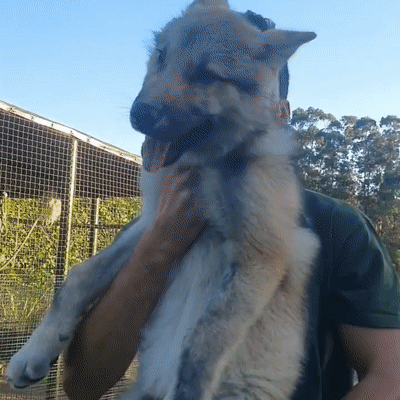



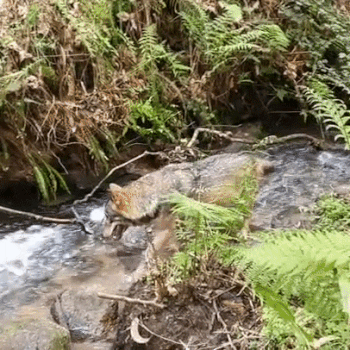


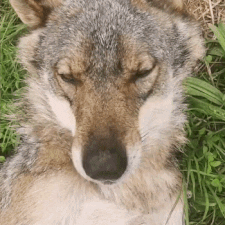
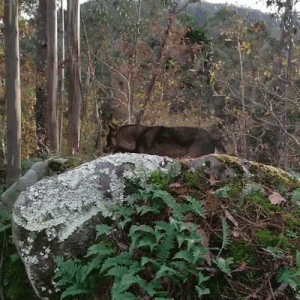

Happy Wolfenoot! even more Iberian wolves~
x x x
x x x
x x x
Banner
I made these gifs-- please link this post if you use!
#wolfenoot#stim stuff#my stim stuff#wolves#iberian wolf#lobo iberico#Lobo ibérico#spanish wolf#take me here#comfort#canis lupus signatus#pups#nature#kin#therian#river#stream
24 notes
·
View notes
Note
Ah, I see we are well matched. A worthy opponent.
I did a autism style deep dive reverse image searching your photos to get the rest of the subspecies. Your Yuri photo comes from a photoshoot of the Chernobyl wolves which are the nominate Canis lupus lupus. Which is pretty funny that he's just a generic Eurasian grey wolf because they don't tend to be white. From the way you'd described him I was thinking more along the lines of Canis lupus albus. Makarov's photo is of a Mackenzie valley wolf Mackenzie valley wolf Canis lupus occidentalis just like Price's. Pretty cool that you had them mirror each other even if accidentally. Nikolai's photos is also of a wolf from Yellowstone which also happen to be Mackenzie valley wolf Canis lupus occidentalis. The image you used for Petrovna is of an Iberian wolf Canis lupus signatus. Soap's is of a Mongolian wolf Canis lupus chanco while Ghost is a Alaskan tundra wolf Canis lupus tundrarum. Your Roach image might actually just be a nominate grey wolf like Yuri's because when I refound the image it was labeled Canis lupus lupus.
i wanted yuri to be a weird fucking wolf for where he came from. i also would’ve made him a steppe wolf but those guys REALLY aren’t (usually) white (though they also have a higher than average rate of hybridization with domestic dogs of the region which is both fascinating and deliberate on my part). he’s not true white, either, and he doesn’t have leucism or albinism. he’s just fucking weird. the fact that the pic i chose is one of the chernobyl wolves is sending me. truly the stars aligning
considering i was trying to find a wolf that also looked a hell of a lot like makarov, it doesn’t surprise me at all but it’s still pretty goddamn cool it worked out that way. i wonder if the black fur gene is just running amok in the mackenzie valley wolves or if it’s just a coincidence. shit’s wild.
once again with the damn mackenzie valley wolves—he’s got a weird phenotype though, which is why i called him “brindled” in the fic. not a true brindling like you’d see in a full dog, but pretty close. i know the yellowstone wolves have a lot going on but i haven’t looked into where they were sourced originally considering the entire population was reintroduced. actually, i‘ll probably look into it later because that sounds fascinating
makes sense considering how muddy her coat is. iberian wolves are so damn pretty. she looks like the “less of a freak” version of her brother which is how god intended, as she is more of a freak than him in most other respects. balance in all things. this also brings up a related point—werewolves don’t necessarily look like their siblings more than the surface level stuff, or are even the same species. if zverev was a wolf, he’d have a light but “smoky” coat, maybe like a mexican wolf but i’ll have to trawl for the right example
i like the tannish colours you get from wolves that typically live in steppes, so it doesn’t surprise me that that’s where soap’s wolf is from, too (also, he looks like he has a mohawk in that picture although that is most likely just folded skin from sitting all silly style). i’m starting to feel like i should justify some of my choices. trust me bro.
ghost’s wolf definitely looks like an alaskan tundra wolf shape-wise (especially in the ears) but there’s gotta be some other shit going on in there because never in my LIFE have i ever seen a colouration like that unless there’s interbreeding going on. i think we can chalk that one up to “mostly that species but probably some dog in there as well” or, well, more dog than usual. who knows, though, genes like to get silly all the time. this specific wolf seems to have been part of the pack at the alaska zoo but was taken by anchorage as a pup with the rest of her siblings so unless they did testing i don‘t think we can really know either way. fun to speculate though!
fuck. okay, this one requires some disentangling. it sure did look to me like a steppe wolf when i found it initially, but considering it was fuckass in the night you know how these things go. i will give you a roach reassignment consolation prize:

i have done my best to ensure this is indeed a steppe wolf. if it is not i am sorry and also fuck this stupid baka life. a sidenote on the topic: it’s dubious if the steppe wolf (specifically canis lupus campestris) even exists genetically and has been referred to pretty frequently as the eurasian wolf/grey wolf so it COULD be that (a lot of the papers they’re even mentioned in is just as the wolves of the region and not by any specific name). however, well, we all know saying “idk though it sure looks like [thing]” doesn’t really mean jack or shit in the grand scheme of genetics. as i mentioned earlier, these guys also frequently interbreed with dogs. in all likelihood, they‘re just a population of eurasian wolves that look a little scragglier than the surrounding areas. which, i mean, that works for roach pretty well
anyhow. kudos for reverse image searching all of these fuckin Guys you absolute madlad. what is science and biologically intensive porn aus without peer review
#funniest shit is i‘m focused way more on anatomy than phylogeny in this au and you can tell#not even for sex reasons but because i wanted to make sure i got transformations to the correct level of fucking nasty while being grounded#i really do need to draw these guys#you will be allowed to point and laugh and call me a furry but you have to wait. let it marinate#crow answers#pyrrhus#anyhow this is fun i love discussing this shit#this is a “NO ONE WANTS TO TALK ABOUT YOUR BIRDS BRENNAN” moment#come let us converse about steppe wolves and their impacts on saiga antelope populations and how the saiga used to drive a migration#just as fucking massive as the wildebeests in kenya and the bison in north america#my last biology fact of the post that maybe two people will read all the way through is that bears can purr.
3 notes
·
View notes
Text










Canis lupus signatus better known as the Iberian Wolf or Lobo ibérico, is a subspecies of grey wolf which inhabits the Iberian Peninsula, specifically northwestern Spain and northern Portugal. This subspecies has been cut off from the rest of Europe's wolves for nearly two centuries and at upwards of 2,800 wolves is the largest wolf population in Western Europe. These primarily nocturnal canines live in small packs of 3 to 10 individuals comprised of one primary breeding pair, there siblings, and both mature and immature offspring. They inhabit forests, grasslands, and mountainous regions. Here they feed upon wild boars, rabbits, roe deer, red deer, ibexes, and occasionally livestock, various birds, fish, lizards, snakes, frogs, and even smaller carnivores. Reaching around 43.3 to 55.1 inches (110–140cms) in body length, 27.6 to 35.4 inches (70 to 90cms) tall at the shoulder, and 55 to 121 pounds (25 to 55kgs) in weight. The Iberian wolf differs from the more common Eurasian wolf with its lighter frame, white marks on the upper lips, the dark marks on the tail, and a pair of dark marks in its front legs that give it its subspecies name, signatus ("marked"). Iberian wolves are generally monogamous and mate for life. The female is responsible for digging a den, where she further gives birth and raises 1-14 pups after a 60-63 day pregnancy. For the first 45 days, all members of the pack participate in feeding the pups through regurgitation. The mother stays with the young for the first 3 weeks, after which the pups continue living in the den until they reach the age of 8-10 weeks. Females become reproductively mature at 2 years old, and males when they are 3 years old. Under ideal conditions an Iberian wolf may live up to 13 years.
#pleistocene pride#pliestocene pride#iberian wolf#wolf#gray wolf#grey wolf#spain#portugal#animal facts
3 notes
·
View notes
Text
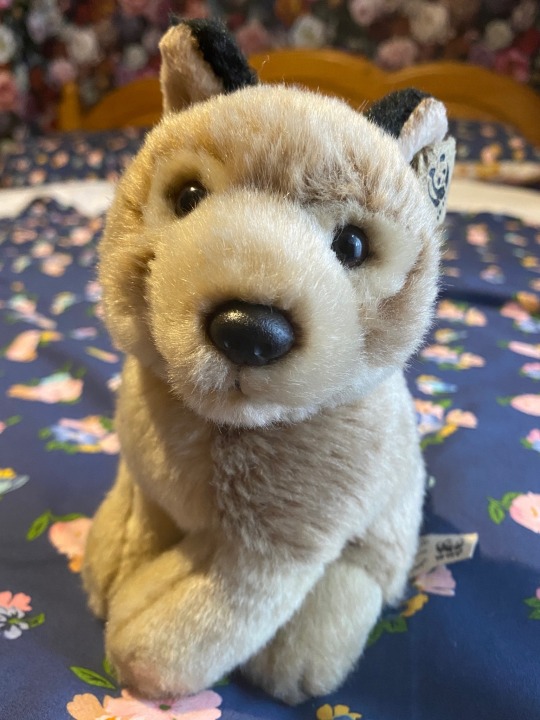

Nacho the Spanish wolf 🐺
I don't think I've posted Nacho before, so I thought I would. Red got her for me around 2007. I don't know if she's actually meant to be an Iberian wolf, as in canis lupus signatus, but I've always called her a Spanish wolf because Red bought her in Spain!
45 notes
·
View notes
Photo

©photography by Walter Jenkel 2014 Iberian Iberian wolf (Canis lupus signatus) WALTER JENKEL @WalterJenkel
40 notes
·
View notes
Text

Lobo Iberico - Iberian Wolf (Canis lupus signatus)
4 notes
·
View notes
Text
Spanien: Wölfe in Andalusien für ausgestorben erklärt
Seit Jahrhunderten streifen Wölfe durch die Gebirgsketten Andalusiens in Südspanien, doch nach Jahren des Rückgangs wurde die Tierart in der Region offiziell für ausgestorben erklärt.
Seit 2003 führt die Regionalregierung eine Zählung der Wolfspopulation (Canis lupus signatus) durch, um die Art zu überwachen und Konflikte mit der lokalen Bevölkerung, insbesondere mit Landwirten, zu…
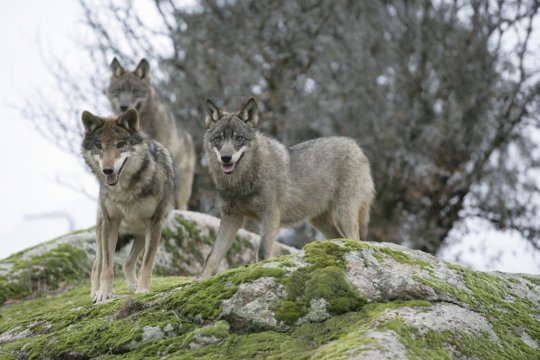
View On WordPress
0 notes
Text
Dois lobos-ibéricos encontrados mortos em Montalegre e Arcos de Valdevez
Dois lobos-ibéricos, animal protegido, foram encontrados mortos nos concelhos de Montalegre e dos Arcos de Valdevez, estando o Ministério Público a investigar, disse à Lusa o Instituto da Conservação da Natureza e das Florestas (ICNF).

Em resposta escrita, o ICNF "confirma que foi informado esta quinta-feira da existência de dois cadáveres de lobo-ibérico na região Norte, um na zona de Montalegre [distrito de Vila Real] e outro na zona dos Arcos de Valdevez [distrito de Viana do Castelo]".
"As circunstâncias em que ocorreram as mortes dos dois animais ainda vão ser apuradas. Não aparentando, contudo, haver qualquer relação entre elas", refere o ICNF.
Fonte da GNR de Vila Real adiantou à Lusa que militares do Serviço de Proteção da Natureza e do Ambiente (SEPNA) de Chaves "recolheram uma carcaça" de lobo-ibérico, pelas 13:00 de ontem, na freguesia de Negrões, concelho de Montalegre, acrescentando que o animal foi transportado para o Instituto Nacional de Veterinária, em Vila do Conde.
Fonte policial revelou à Lusa que "apareceu morto com um tiro" o lobo-ibérico encontrado no concelho de Montalegre.
"Ao ter tido conhecimento dos dois cadáveres, o ICNF ativou de imediato o protocolo estabelecido no âmbito do Sistema de Monitorização de Lobos Mortos, que envolve este instituto, a GNR, o Ministério Público e o Instituto Nacional de Investigação Agrária e Veterinária (INIAV)", explica o ICNF.
Este organismo acrescenta que, no âmbito das suas competências, as equipas do Serviço de Proteção da Natureza e do Ambiente (SEPNA/GNR) e os Vigilantes da Natureza (ICNF) presentes no terreno "desencadearam uma série de procedimentos de investigação, bem como a recolha dos cadáveres, que foram entregues ao INIAV para necropsia".
"Procedeu-se também à elaboração do expediente das ocorrências a entregar no Ministério Público, nas Comarcas de Montalegre e dos Arcos de Valdevez", refere o ICNF.
O Instituto da Conservação da Natureza e das Florestas (ICNF) lembra que em Portugal, "o lobo-ibérico (Canis lupus signatus) é, desde 1989, uma espécie estritamente protegida, quer por via de legislação europeia (Convenção de Berna e Diretiva Habitats), quer por via de legislação nacional (Lei nº90/88, de 27 de abril e Decreto-Lei nº54/2016, de 25 de agosto)".
0 notes
Text
5 Signs Your Dog Loves You, According to Science
New Post has been published on https://petnews2day.com/pet-news/dog-news/5-signs-your-dog-loves-you-according-to-science/
5 Signs Your Dog Loves You, According to Science
Dogs evolved over centuries from ancient wild wolves into loyal partners to humans.
A growing body of research explains how dogs’ distinctive features and skills strengthened the human-canine bond.
Dogs can tell when we’re stressed, when we’re lying, and mirror our behavior, research suggests.
Loading Something is loading.
Thanks for signing up!
Access your favorite topics in a personalized feed while you’re on the go.
download the app
Dogs have long been considered man’s best friend, and for good reason. Over centuries, our four-legged canine companions evolved to become loyal partners.
A growing body of scientific research suggests our furry friends have distinctive features and skills that allow them to perceive, understand, communicate, and show affection toward humans.
From sniffing out when we’re stressed to tearing up when reunited with their owners, here is what science reveals about how humans’ special relationship with dogs developed over time.
Scientists generally agree that dogs evolved from wolves to become the furry, fetch-loving domestic animals they are today roughly 15,000 years ago. But scientists have different theories on how exactly the split from wolves happened.
Dogs wait inside a school bus for their companions to take them to dog school in Santiago, Chile, on September 23, 2022.
Lucas Aguayo Araos/Anadolu Agency via Getty Images
In a study published in the journal Nature in June, geneticists at the Francis Crick Institute analyzed the genomes — or all of the genetic information — of 72 ancient wolves from Europe, Siberia, and North America spanning 100,000 years. Then they compared the wolf DNA, which makes up the genome, to DNA of modern and ancient dogs.
By analyzing the DNA, scientists found early and modern dogs are most similar to gray wolves in Siberia about 13,000 to 23,000 years ago, suggesting domestication took place somewhere in Asia.
“That’s consistent with a wolf population from Central Asia leading to the origin of dogs,” Adam Boyko, a canine geneticist at Cornell University, who was not involved in the study, previously told Insider.
That might not be the end of the story, Boyko added. The findings don’t rule out the possibility that dogs may have been domesticated multiple times, as ancient dogs in the Middle East, Africa, and Southern Europe also show ancestry from wolves in the Middle East.
An Iberian wolf (Canis lupus signatus) exercises at Basondo Animal Refuge, in Kortezubi, Spain, on February 8, 2021.
Vincent West/Reuters
Though their wild ancestors are known for their ferocious nature, dogs evolved to have bigger and more baby-like eyes over time.
In a study published in the Proceedings of the National Academy of Science in 2019, researchers discovered that dogs have muscles around their eyes that help them make puppy dog eyes — that soft squinting look that melts your heart. Wolves don’t have these muscles, which suggests dogs’ adorable expression is an evolutionary trait that helped them get on better with humans.
The author’s Cavalier King Charles Spaniel, Cece.
Paola Rosa-Aquino
Dogs may be able to smell when you’re stressed, according to a study published in Plos One in September. Stress responses trigger physiological changes in humans’ sweat and breath that dogs can detect.
The study involved collecting breath and sweat samples from human participants before and after they completed a “stress-inducing” task. Then dogs trained in identifying odors had to choose between a sample from an unstressed human and a stressed one. The dogs correctly identified the stress sample 94% of the time.
One of the study’s canine participants, Megan, sniffing a human breath and sweat sample.
Courtesy of Kerry Campbell
“This study demonstrates that dogs can discriminate between the breath and sweat taken from humans before and after a stress-inducing task,” the study authors wrote, meaning they were able to identify human odors associated with stress.
Dogs even adopt their owners’ personalities. Research published in the Journal of Research in Personality in 2019 surveyed more than 1,600 dog owners, representing about 50 different breeds. The owners were asked to evaluate their dogs’ personalities and answer questions about their dogs’ behavioral histories. The owners were also asked questions about their own personalities.
Extroverted owners rated their dogs as more active and playful, while owners of more fearful dogs reported more negative emotions.
And while several studies support the notion that dogs and owners often look alike, that’s largely because owners tend to pick dog breeds based on the breed’s resemblance to themselves.
A recovered rescue at the Denver International Airport in 2022.
Denver International Airport
Research suggests dogs are hardwired to communicate with and understand people in unique ways.
“Dogs are very responsive to the way that we talk to them,” John Bradshaw, anthrozoologist and author of “The Animals Among Us,” previously told Insider. “It tricks many owners into thinking they literally understand every word.”
But while they might not understand the words you’re saying, Bradshaw added, dogs are very good at learning to respond to their owner’s tone of voice in specific ways. “It’s almost true that the dog is responding to every word they say,” Bradshaw said.
A study published in the journal Scientific Reports in 2021 found that dogs can understand the difference between humans’ accidental and deliberate actions — or, in other words, when we screw up.
Dogs were fed through the gap before the experimenter started to withhold the reward intentionally or unintentionally.
Josepha Erlacher
The experiment involved 51 dogs who were taught they’d get tasty treats from a human through a gap in a glass partition. Then researchers looked at how dogs reacted when food rewards were withheld from them.
In the study, dogs waited much longer to retrieve the treat when the researcher purposefully withheld it than when the researcher dropped it or couldn’t get it through the glass partition. That finding suggests dogs can distinguish between humans’ intentional actions and unintentional ones.
“Dogs’ communicative skills uniquely position them to fill the niche that they do alongside humans,” Emily Bray, a canine-cognition researcher at the University of Arizona, Tucson, previously told Insider in an email. “Many of the tasks that they perform for us, now and in the past (i.e. herding, hunting, detecting, acting as service dogs), are facilitated by their ability to understand our cues.”
Dog happy to see owner.
Madoka Nakamura
It’s common to see dogs overjoyed to be reunited with their owners.
In a study published in Current Biology in August, researchers recruited 22 dogs and their owners. First, researchers measured tear volume in dogs’ eyes during a normal interaction with their owners, as a baseline. Then, following five to seven hours spent away from their owner, researchers measured tear volume on the surface of the dogs’ eyes each time they were reunited.
After a long period of separation, the dogs’ eyes were brimming with tears when they saw their owner.
“We found that dogs shed tears associated with positive emotions,” Takefumi Kikusui, the study’s lead author and a veterinary researcher at Azabu University in Japan, said in a press release.
This behavior may be related to dogs producing more oxytocin, commonly called the “love hormone,” when they see their owners. Oxytocin also plays a role in emotional bonding in humans.
0 notes
Photo



Wolves discovered living just outside Rome for first time in more than a century
Hidden cameras captured a pair of mature cubs drinking from a watering hole and loping through the undergrowth of the protected area.
The city's symbol is a she-wolf suckling the infant brothers Romulus and Remus, and now wolves have been spotted outside Rome for the first time in more than a century.
The wolves were photographed by hidden cameras in startling proximity to the city – roaming a nature reserve just outside the busy three-lane ring road that encircles the Italian capital.
The reserve at Castel di Guido is not far from Leonardo da Vinci international airport – the city’s biggest – and is run by LIPU, the Italian League for the Protection of Birds.
Biologists believe there are at least two cubs and two adults living in the reserve. The male adult has been nicknamed Romulus by researchers.
“This is the first time in more than 100 years that wolves have been found living near Rome,” Alessia De Lorenzis, a professor of natural sciences who is monitoring the wolf pack, told The Telegraph. “We’re very pleased that they are back.”
The wolves should pose no threat to livestock because analysis of their excrement had shown that their diet was made up exclusively of wild boar, which roam the countryside in large numbers.
“We think they probably arrived here from the area around Lake Bracciano, north of Rome, where wolves have always existed, even when the species was pushed towards extinction,” said Prof De Lorenzis.
Killing wolves was encouraged in Italy until the 1970s, by which time only 100 or so individuals remained in Italy. But the species was given protected status in 1971 and has since gradually recovered.
It is believed there are now 1,500-2,000 individuals roaming Italy, with strong populations in the Apennines and in the Alps, on the border with France.
The wolves have crossed the border in recent years and are blamed by French farmers and shepherds for killing sheep. The wolves have gradually moved north, into the Massif Central and up through the Jura and Vosges mountains, with claims recently that some are living in the countryside around Paris.
Conservation groups are campaigning for wolves to be reintroduced to Britain, along with brown bears and lynx. Beavers have already been successfully reestablished in some parts of the country.
Source
#wolf#wolves#rome#wildlife#nature#news#italy#trap cameras#wolf pack#romulus#iberian wolf#canis lupus signatus
6K notes
·
View notes
Text
I did a new sona mask edit now that I have their design cemented.
my edit vs original image


Mask made by RooriginalDesigns (formerly OkamiKitsuneStore) on Etsy!
First mask edit

Sona in question


Screenshots of my main WQ wolf, upon whom their design is based!


I do not consent to reposts of my shit or use for machine learning programs
#wolves#guiltyedits#guiltyart#Iberian wolf#signatus#canis lupus signatus#sona#leather#mask#masquerade#cosplay#and. hh again adding the following tags because. yeah#therian#wolfkin#Iberio#oc#wolfquest#wq ae
17 notes
·
View notes
Video
Picture by Jose Manuel Fernandez PiPo
Iberian wolf (canis lupus signatus) with some kind of skin condition.
#wolf#wolves#nature#wildlife#animals#archive#iberain#iberian wolf#iberian wolves#canis lupus signatus#skin condition#condition#special#markings#fur#skin#nose#snout#coat
1K notes
·
View notes
Photo

Canis Lupus Signatus by Xenia Blanco.
#wolves#canis lupus signatus#wolf#family#pack of wolves#secrets#wild animals#wildlife#flickr#europe#nature photography#photooftheday#amazing#love#friends#cuddle#hello#summer#landscape#pics#flowers
614 notes
·
View notes
Photo

#lobo #ibérico #canis #lupus #signatus #love #wolf #animal #nature #centrodellobo #centrodelloboiberico (en Centro del Lobo Ibérico de Castilla y León) https://www.instagram.com/p/CGNSqPcHvIS/?igshid=e5wau53ain8l
1 note
·
View note
Text
Pictures of the Year: Animals l Reuters

Disabled dogs in mobility aids run during a daily walk/ The Man That Rescues Dogs Foundation, Thailand, Athit Perawongmetha

While the Cumbre Vieja volcano keeps erupting/ La Palma, Spain, Borja Suarez

A service member of the Ukrainian armed forces plays with puppies at fighting positions on the line of separation from pro-Russian rebels/ Donetsk region, Ukraine, Oleksandr Klymenko

Fireflies light up inside a forest at Pitrufquen area/ Temuco, Chile, Cristobal Saavedra Escobar

A stray dog with blue fur found near an abandoned chemical plant/ Dzerzhinsk, Russia, Anastasia Makarycheva

A nineteen-day-old baby giraffe/ the Zoo de la Fleche, France, Stephane Mahe

A cow is transported by a helicopter after its summer sojourn in the high Swiss Alpine meadows/ Switzerland, Arnd Wiegmann

An Iberian wolf (Canis lupus signatus) exercises at Basondo Animal Refuge/ Kortezubi, Spain, Vincent West

An eleven-day-old baby Bornean orangutan and his mother/ Bioparc Fuengirola in Fuengirola, Spain, Jon Nazca

A worker covers the eye of an African elephant during a medical assistance, as the Sindh High Court has requested assessment of health condition of the elephants, after a Pakistan Animal Welfare Society (PAWS) filed a petition/ Karachi, Pakistan, Akhtar Soomro ⁕ 10 out of 37 from Reuters
#animals#dogs#elephants#wildlife#wolf#wolves#orangutans#photography#pictures of the year#reuters pictures#animal#photos#photojournalism#animal rights#giraffes#animals in the world#cows
182 notes
·
View notes